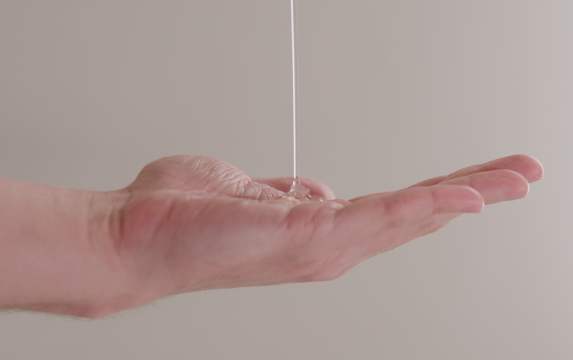Condom-Associated Erection Problems (CAEP) are a common occurrence that might affect men at different ages. Why does it happen, and how can you best deal with it? Read on to find out.
Do you lose your erection when using a condom?
“Have safe sex, use a condom” – this has always been stressed for us as extremely important. But no one prepared us for the possibility that this protective contraceptive might put a damper on our bedroom party. CAEP is, in fact, a common occurrence with implications including reduced condom effectiveness in preventing unplanned pregnancy and sexually transmissible infections. The definition of CAEP includes loss of erection before, during, or after the application of a condom, and it can happen to men that have no other erectile problems. One of the studies found that out of 579 young men aged 18-24, 220 men experienced erection loss during condom application, while 229 men experienced erection loss during penetration with a condom. Overall, 154 (52%) participants reported experiencing the two types of CAEP.
It has likewise been found that although CAEP can occur at any age, it has a higher chance of occurring in young adults new to the world of sex.
Why Does it Happen?
It’s important to understand what triggers CAEP because usually, there is a simple solution, whether a single factor is involved or a combination of things.
Problems Associated with Condom Application
We’re all familiar with that awkward moment when the foreplay is going great, it seems your partner is enjoying her/his self, you feel amazing, and now is the perfect moment to reach for the condom.
However, studies show that men who forwent the “condom conversation” with a partner before sex, or those who fumbled around for a condom in the dark, struggling to open up the package, were often overcome with anxiety and embarrassment that killed the passionate moment and led to erection loss. For sexually inexperienced men, using a condom can often lead to stress and nervousness, particularly as it involves groping around for the condom while trying to put it on correctly in the presence of a sexual partner.
Additionally, when a man is new to condom use, stress during the act can make him “rush the process” while putting the condom incorrectly. Condom misuse is one of the biggest causes of CAEP. Even when a man “takes the time” during the act to figure out how to put on the condom correctly, the pause in stimulation coupled with that brain overdrive are all likely to lead to erection loss.
Incorrect Size
Trying to have sex with a condom that’s too big or too small will likely impact the ability to get aroused, particularly when the focus is more on the inconvenience the ill-fitting condom causes than on the actual sexual act.
When the condom is too small or tight, it can impair penile blood flow and cause loss of sensation, making sex less pleasurable and erection problems more likely. A tight condom is also more likely to break, destroying the moment and killing your erection.
Using a condom that is too big might feel like wearing a baggy shirt – which can be extremely uncomfortable, making it hard to maintain an erection. Too big a condom may likewise fall off during sex, which can increase stress levels and have a negative effect on the erection. Additionally, when the condom is too big, sperm and body fluids might travel out freely, raising the risk of unplanned pregnancy and sexually transmitted infections.
Applying a condom before the penis is fully erect also increases the risk of erection problems. In addition, studies show that men often get distracted while struggling to put on a condom just before penile-vaginal intercourse, and the loss of focus makes it hard for them to maintain their erections.
Insufficient Sensation
One study found that more than 3/4 of men reporting erection problems during penile-vaginal intercourse (CAEP-PVI) with a condom attributed their erection loss to insufficient sensation through the condom. More than 50% reported it was taking too long to orgasm, or they were not turned on enough. On the other hand, about 50% of the men attributed CAEP-PVI to too much alcohol, worrying because, in the past, they have lost erections while using a condom, their erections were weak when the condom was applied and decreased during PVI, or that the condom didn’t feel right.
What Can You Do About CAEP?
- Choose the Most Suitable Condom – Condoms come in different types, sizes, textures, and qualities. The quality of a condom is something many overlook, though it can significantly impact a man’s ability to achieve and maintain an erection, while a low-quality condom can undermine the sensation of pleasure. If you have been using a particular type of condom and experienced erectile problems, make sure you experiment with various brands and types.For some men, condom length is not the issue – it’s the girth that’s causing the condom to feel loose or tight. However, manufacturers nowadays make condoms in various shapes and sizes so that this contraceptive is made accessible and effective for everyone. To find the right size, it’s best to measure the length and girth of your erect penis. Once you find the right fit, it will be easier to apply the condom during the act and avoid an unnecessary struggle.
- Try a Condom with Textural Additives– there are ribbed for his pleasure condoms, designed to enhance pleasure by this extra rubbing stimulation.
- Let Your Partner Apply It – condom application can be easily incorporated as part of the foreplay. Your partner can stimulate you (as you unwrap the condom or put it on while you stimulate each other. This will eliminate distractions, interruption, and erection loss.
- Practice Alone – Men who have already experienced CAEP and now the negative association with condoms gives rise to performance anxiety, should prepare and practice condom application alone to take off the pressure. Naturally, it’s easier when you can peacefully practice putting a condom on correctly. Try solo masturbation with a condom on for a “real-time” experience. It will allow you to get used to the feeling of a condom while learning to maintain the erection with a condom on.
- Communicate with Your Partner – it may feel a bit embarrassing, but there’s nothing like an open and honest conversation about the fear of erection loss due to condom use. Often, your partner may think they’re unattractive and that they’re the problem. Direct communication will clarify things and reduce the embarrassment. It will allow you to slow down and take things easy without stress.
The Company hereby clarifies that the information contained on the website is for informational purposes only, and is not intended to be a substitute for professional medical and healthcare advice, and does not constitute medical advice or opinion. Always seek the advice of your physician or other qualified health provider with any medical condition or question you may have regarding a medical condition.





